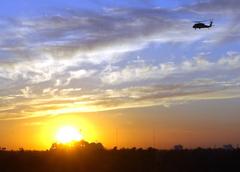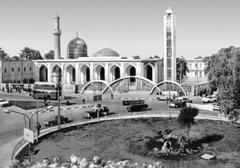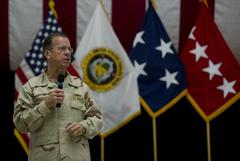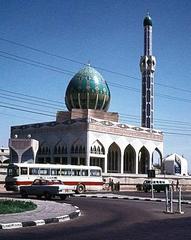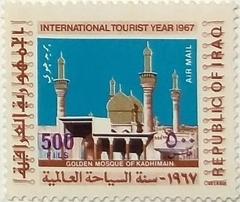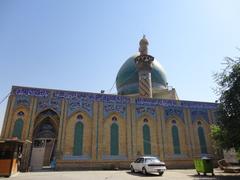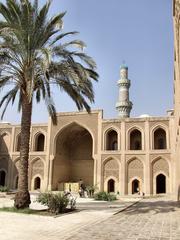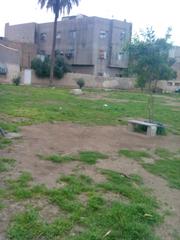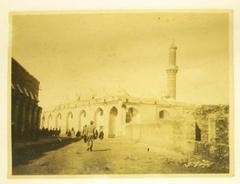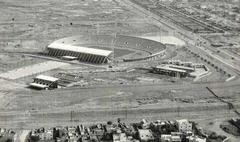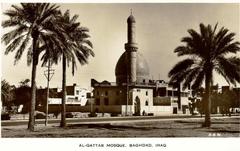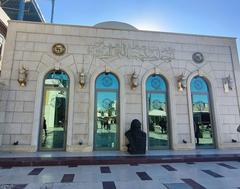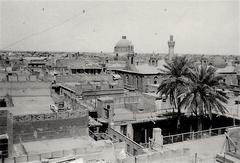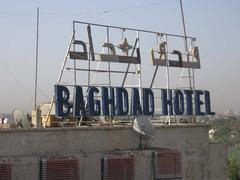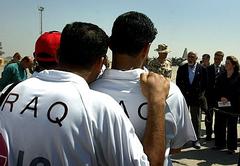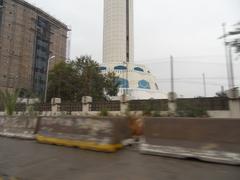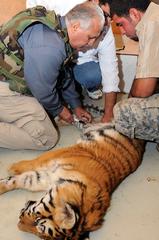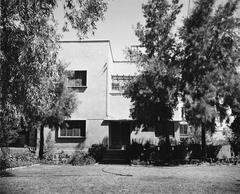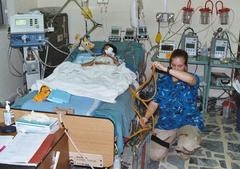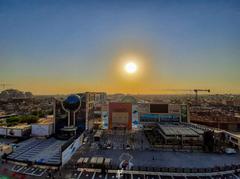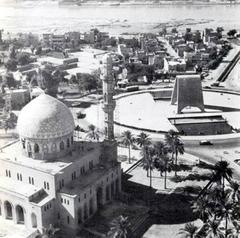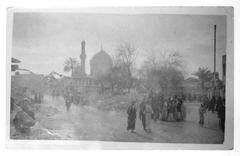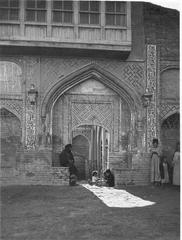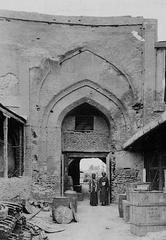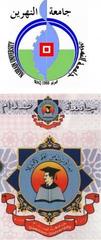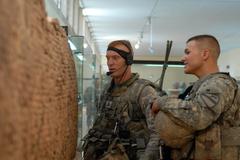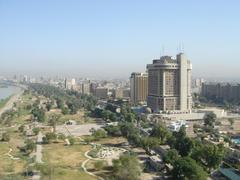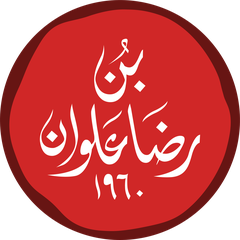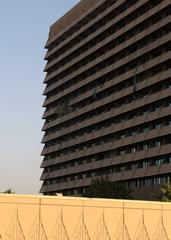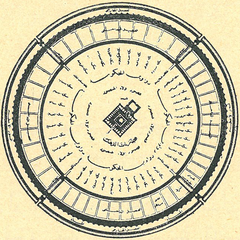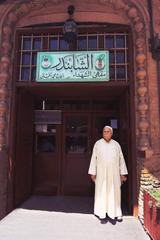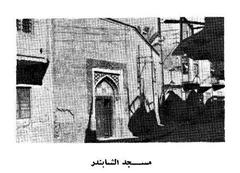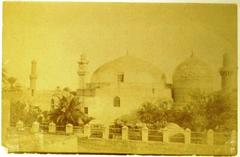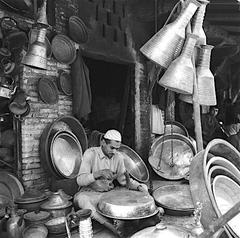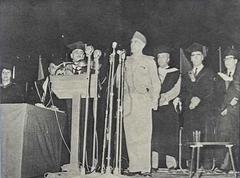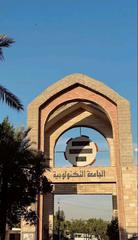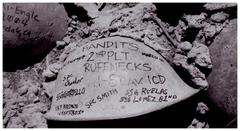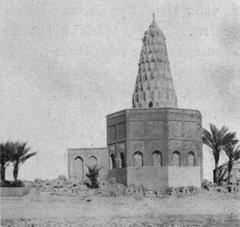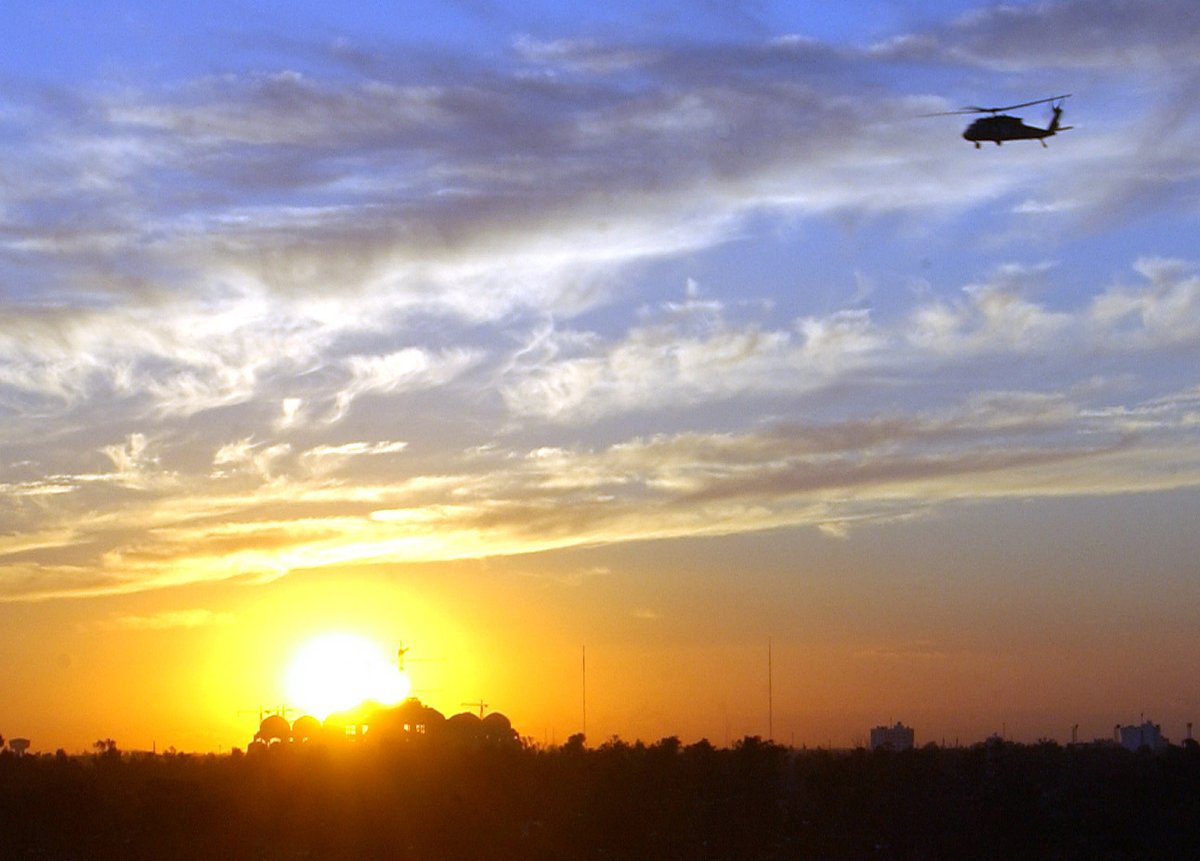
Al-Rahman Mosque Visiting Hours, Tickets, and Guide to Baghdad Historical Sites
Date: 14/06/2025
Introduction
The Al-Rahman Mosque in Baghdad stands as one of Iraq’s most ambitious yet unfinished landmarks, representing the intersection of faith, politics, and culture in modern Iraqi history. Conceived in the late 1990s during Saddam Hussein’s “Faith Campaign,” the mosque was designed to rival the world’s grandest religious structures, symbolizing Islamic unity and national pride. Strategically located in the Mansour district, the mosque was intended to revitalize Baghdad’s religious and cultural landscape through a blend of traditional Islamic motifs and modern engineering (wikiwand; ArchNet).
Though construction made significant progress by 2003, it was abruptly halted due to the US-led invasion, leaving the mosque incomplete. Today, Al-Rahman Mosque’s exposed concrete and unfinished domes serve as a stark reminder of Iraq’s turbulent modern era, ongoing challenges in heritage preservation, and the city’s architectural ambitions (Jordan Times; Atlas Obscura).
This guide offers a detailed exploration of the mosque’s history, architectural features, current status, and practical visitor information. Whether you are an architecture enthusiast, cultural traveler, or researcher, the story of Al-Rahman Mosque enriches any understanding of Iraq’s layered heritage (Trip.com; Middle East Eye).
Table of Contents
- Introduction
- Historical Context: The Faith Campaign and Saddam Hussein’s Vision
- Site Selection, Planning, and Construction Timeline
- Architectural Design and Features
- Post-2003 Developments and Current Status
- Comparative Context: Grand Saddam Mosque
- Visiting Hours, Tickets, and Accessibility
- Travel Tips and Nearby Attractions
- Special Events and Guided Tours
- Safety, Etiquette, and Visitor Facilities
- Preservation and Restoration Efforts
- Frequently Asked Questions (FAQ)
- Conclusion and Call to Action
- References
Historical Context: The Faith Campaign and Saddam Hussein’s Vision
The Al-Rahman Mosque was a product of the late 1990s “Faith Campaign” initiated by Saddam Hussein. This state-driven effort sought to reinforce Islamic identity across Iraq, with monumental mosques in every province and Baghdad as the focal point (wikiwand). The campaign served political objectives, aiming to consolidate power by merging Islamic values with public life and education.
Al-Rahman Mosque was intended to be among the largest mosques worldwide, celebrating Arab and Islamic architectural traditions with a modern twist. Its scale—designed to accommodate up to 15,000 worshippers—reflected both religious and political aspirations.
Site Selection, Planning, and Construction Timeline
The mosque was planned on the former site of Baghdad’s horse-race track in the upscale Mansour district, covering 4.5 hectares (11 acres) (globalsecurity). A partnership between the Presidency of the Diwan and the University of Baghdad led the design process, with Saher al-Qaisi as the chief architect. The ambitious project called for a mosque 250 meters in diameter, with construction commencing in 1998. A second phase began in 1999, but by 2003—when the US-led invasion halted all work—the main dome and several of the surrounding domes had been erected (wikiwand; globalsecurity).
Architectural Design and Features
Layout and Domes
Al-Rahman Mosque’s design is noteworthy for its cascading dome effect. A colossal central dome is surrounded by eight medium-sized domes, each circled by eight smaller domes, totaling 14 domes and creating a distinctive silhouette (wikiwand). The main dome, intended to be clad in faience tiles and gold, would have stood as an icon on Baghdad’s skyline.
Floor Plan and Supporting Structures
The octagonal floor plan reflects both Islamic tradition and structural efficiency. Planned within were private and public corridors, a grand minaret, a summer chapel, multiple entrances, and service buildings—each echoing Iraqi and broader Islamic heritage (wikiwand).
Materials and Decoration
Reinforced concrete and locally sourced stone were used for the ambitious domes and arches, while the original plans envisioned intricate calligraphy, arabesque motifs, and mosaic tilework. Large clerestory windows were to provide natural light, with the dome’s geometry engineered to optimize acoustics (Atlas Obscura).
Post-2003 Developments and Current Status
Following the 2003 invasion and dissolution of the Ministry of Endowments and Religious Affairs, the mosque’s ownership became disputed between the Sunni and Shi’a Endowment Offices. The Shi’a Islamic Virtue Party currently controls the site, using it for occasional Friday prayers despite its unfinished state. In 2020, the Shi’a Endowment Office was granted legal authority, but compensation orders remain unenforced, leaving the mosque in legal limbo (Jordan Times).
The site now stands as an emblem of interrupted ambition and ongoing societal division, with exposed concrete shells and incomplete domes dominating the landscape.
Comparative Context: Grand Saddam Mosque
A separate, even larger project—the “Grand Saddam Mosque”—was also planned for Baghdad’s Karkh district, with a 300-meter dome. Construction barely began before being halted. Both projects reflect Saddam Hussein’s vision to redefine Baghdad’s urban identity (wikiwand; globalsecurity).
Visiting Hours, Tickets, and Accessibility
Visiting Hours
As of June 2025, the Al-Rahman Mosque is not officially open for worship or tourism. There are no established visiting hours. However, visitors can view the mosque’s exterior during daylight hours—typically from 8:00 AM to 6:00 PM—though interior access is restricted due to safety issues.
Tickets and Entrance Fees
There is no ticketing system or entrance fee, as the site remains unfinished and is not formally recognized as a tourist attraction.
Accessibility
Access is limited due to the mosque’s incomplete state. The site features uneven terrain and construction debris, posing challenges for those with mobility impairments. There are no visitor amenities such as restrooms, signage, or lighting.
Travel Tips and Nearby Attractions
- Safety: Exercise caution due to the unfinished structures and lack of security infrastructure. Always check current security conditions through trusted sources.
- Dress Code: Modest attire is expected. Men should wear long trousers and shirts with sleeves; women should cover their hair and wear loose-fitting clothing that covers arms and legs.
- Local Guidance: Consider hiring a local guide for a more informative and secure experience.
- Nearby Attractions: The Mansour district includes other cultural sites and amenities. Combine your visit with the Abbasid Palace, National Museum of Iraq, and Al-Kadhimiya Mosque for a richer cultural experience.
Special Events and Guided Tours
There are currently no official events or guided tours for Al-Rahman Mosque, given its unfinished status and legal complexities. Some local guides may offer exterior tours or include the mosque in broader Baghdad heritage walks.
Safety, Etiquette, and Visitor Facilities
- Site Conditions: The mosque is unfinished, with exposed concrete and structural hazards.
- Etiquette: Respect religious significance, avoid disruptive behavior, and seek permission before photographing individuals.
- Facilities: No amenities are available on-site. Bring water and supplies; the Mansour district offers dining and shopping options nearby.
Preservation and Restoration Efforts
As of mid-2025, there are no formal restoration or completion projects underway. Efforts to repurpose the mosque as a university or museum have stalled due to high costs and political disputes (Jordan Times). Heritage advocates continue to call for adaptive reuse, especially as Baghdad has been named the Arab Capital of Tourism for 2025, but progress remains slow (Shafaq News).
Frequently Asked Questions (FAQ)
Q: Can I enter the Al-Rahman Mosque?
A: Access to the interior is restricted; visitors can view the mosque from the outside but should respect ongoing religious activities and security measures.
Q: Are there entrance fees or tickets?
A: No, the site is not an official tourist attraction and does not charge admission.
Q: What are the best times to visit?
A: Daylight hours (8:00 AM–6:00 PM) are safest for viewing, ideally avoiding Friday prayer times.
Q: Is the mosque safe to visit?
A: Exercise caution due to incomplete construction and lack of amenities. Check security conditions in advance.
Q: Are guided tours available?
A: No official tours exist, but local guides may include the mosque in broader tours of Baghdad.
Q: Is photography allowed?
A: Yes, but be respectful and avoid photographing people without permission.
Conclusion and Call to Action
The Al-Rahman Mosque is a powerful symbol of Iraq’s complex history, architectural ambition, and cultural potential. Although unfinished and not officially open for visitors, it stands as a testament to Baghdad’s resilience and evolving urban narrative. Visitors and heritage enthusiasts are encouraged to stay informed about future developments and to engage respectfully with this site and the surrounding community.
For real-time updates, maps, and guided tours of Baghdad’s landmarks, download the Audiala app. Follow us on social media for the latest insights into Iraq’s cultural heritage and travel tips for exploring its historic sites.
References
- Al-Rahman Mosque, Baghdad, 2025, Wikiwand
- Al-Rahman Mosque Baghdad, ArchNet, 2025
- Al-Rahman Mosque Baghdad: Visiting Hours, Tickets, and Architectural Significance, Atlas Obscura, 2025
- Incomplete Saddam-era marquee mosque lays bare Iraq divisions, Jordan Times, 2025
- Al-Rahman Mosque in Baghdad: Visiting Hours, Tickets, and Cultural Insights, Trip.com, 2025
- Iraq Baghdad Mosque Saddam Hussein, Middle East Eye, 2025
- Baghdad crowned Arab Capital of Tourism 2025: A turning point for Iraq’s future, Shafaq News, 2025
